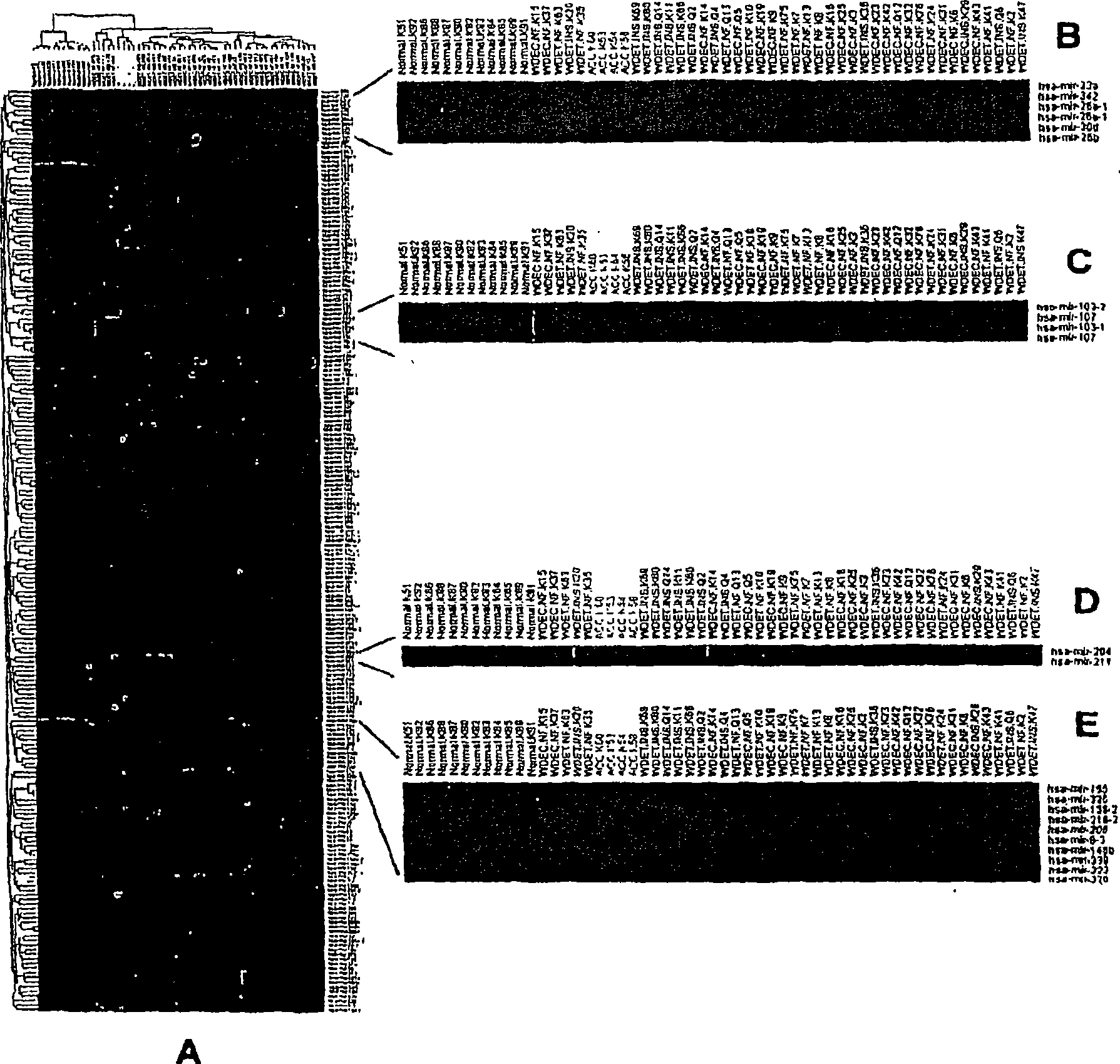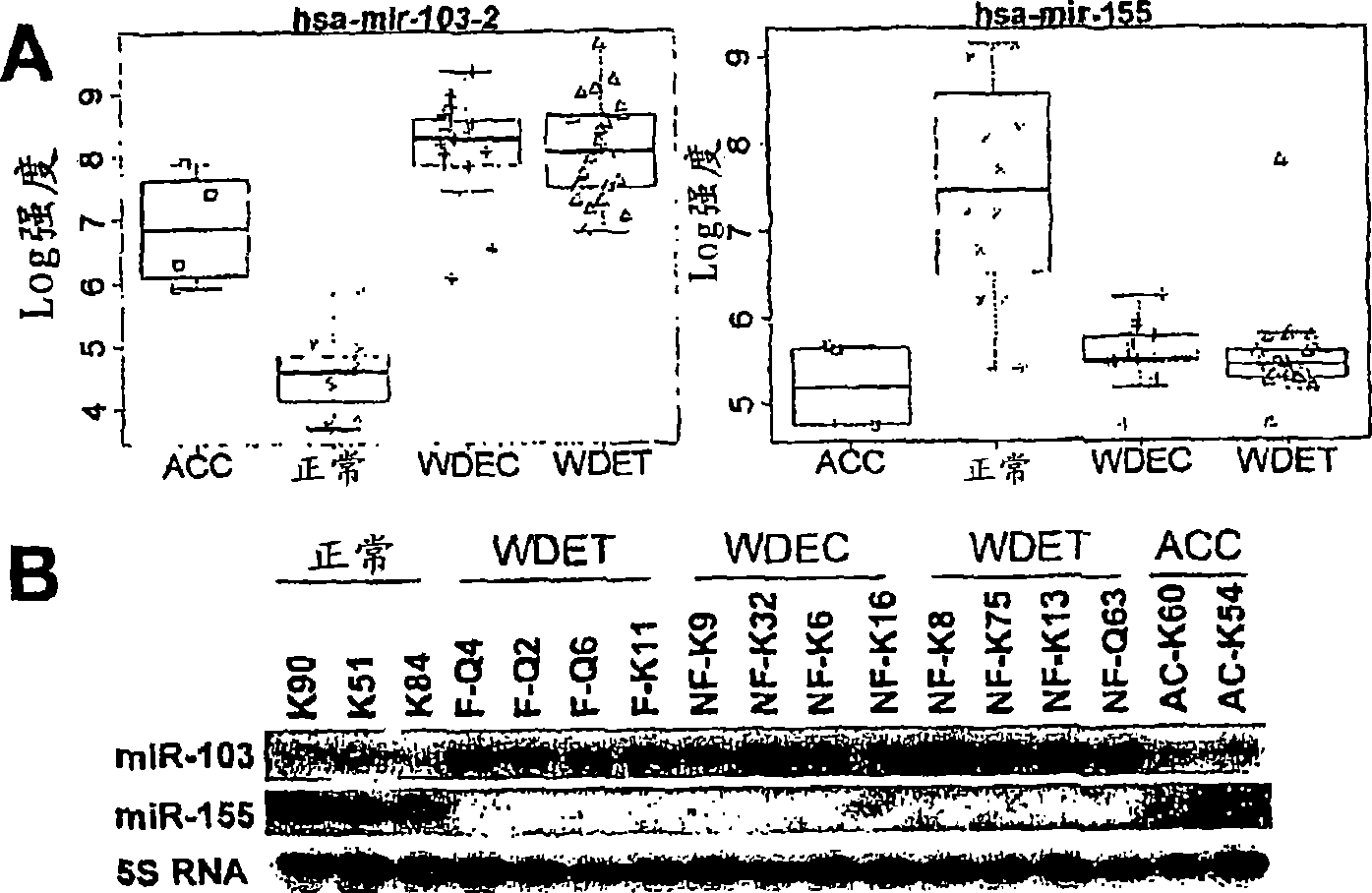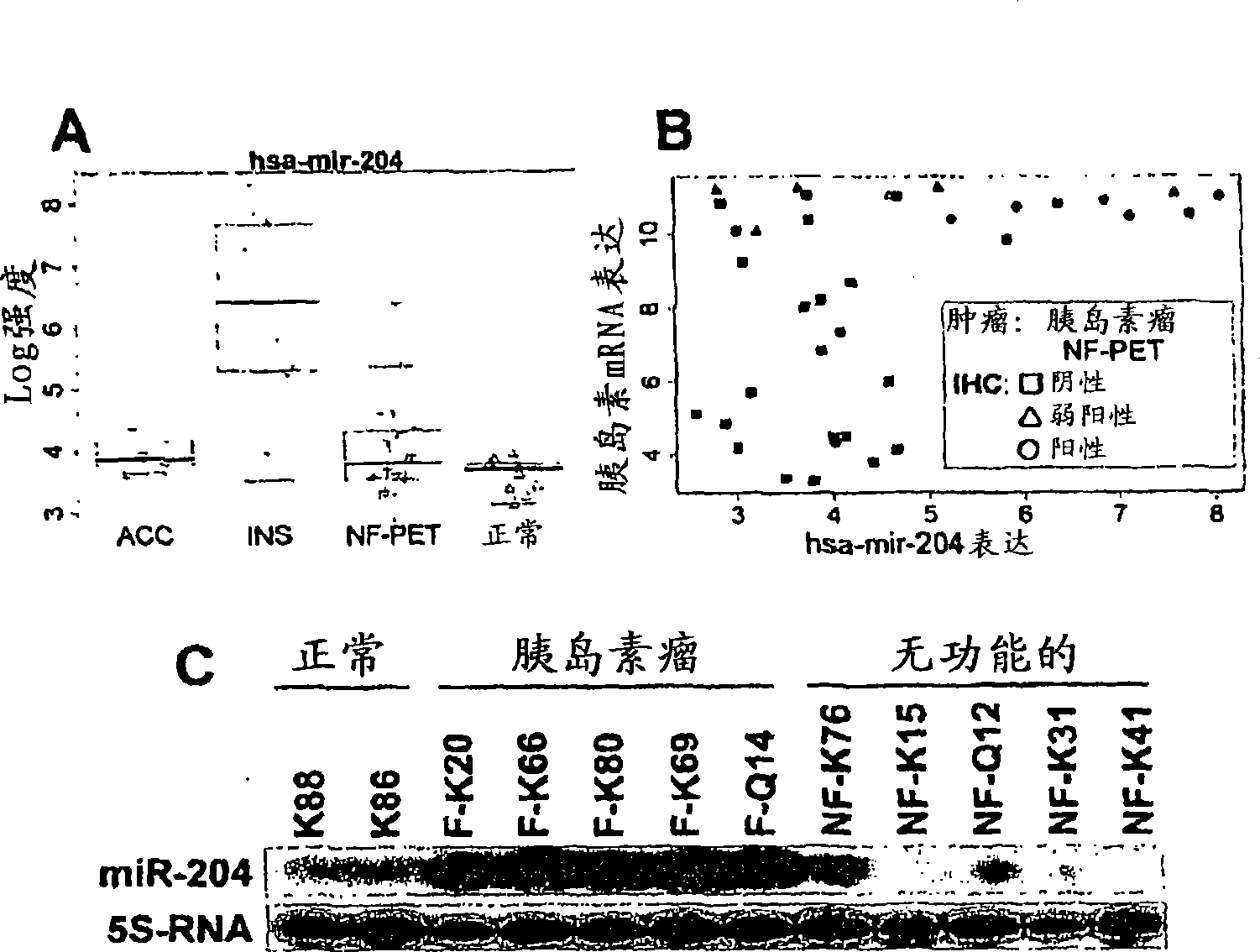Microrna expression abnormalities in pancreatic endocrine and acinar tumors
A technology for pancreas and pancreatic cancer, applied in antitumor drugs, medical preparations containing active ingredients, analytical materials, etc., can solve problems such as unpredictability and huge differences in malignant potential.
- Summary
- Abstract
- Description
- Claims
- Application Information
AI Technical Summary
Problems solved by technology
Method used
Image
Examples
Embodiment
[0206] Materials and methods
[0207] Patient data, tumor cell enrichment and RNA extraction.
[0208] Table 2 reports the clinicopathological characteristics of 40 PET and 4 PACC obtained from the frozen tissue bank of the Department of Pathology of the University of Verona, Italy. All tumors are sporadic, which is judged by the personal and family history of the patient's direct interview. PET is diagnosed by histopathology and cell marker analysis, and classified according to WHO standards (Kloppel, G. et al., "The Gastroenteropancreatic Neuroendocrine Cell System and Its Tumors: The WHO Classification." Ann. NYAcad. Set 1014: 13-27 ( 2004)). They included 28 non-functional and 12 functional tumors. The 28 NF-PET includes 11 well-differentiated endocrine tumors (WDET) and 18 well-differentiated endocrine carcinomas (WDEC). Twelve F-PETs are insulinomas, which include 11 WDET and 1 WDEC. According to WHO standards that consider tumor size, Ki-67 proliferation index, and vascular...
PUM
 Login to View More
Login to View More Abstract
Description
Claims
Application Information
 Login to View More
Login to View More - R&D
- Intellectual Property
- Life Sciences
- Materials
- Tech Scout
- Unparalleled Data Quality
- Higher Quality Content
- 60% Fewer Hallucinations
Browse by: Latest US Patents, China's latest patents, Technical Efficacy Thesaurus, Application Domain, Technology Topic, Popular Technical Reports.
© 2025 PatSnap. All rights reserved.Legal|Privacy policy|Modern Slavery Act Transparency Statement|Sitemap|About US| Contact US: help@patsnap.com



